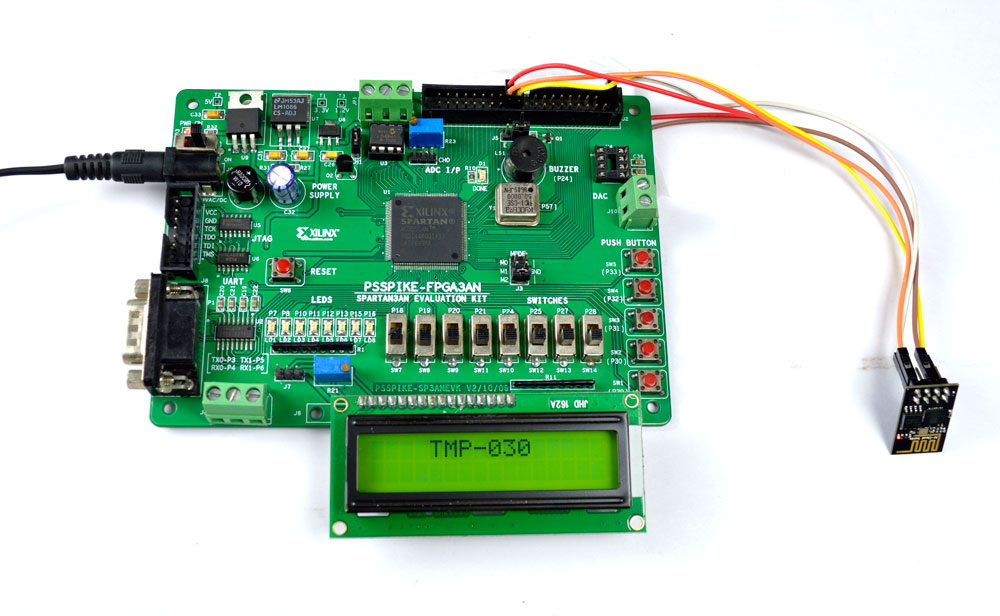Time: 2025-02-10 14:43:56View:
Implementing an electronic clock using an FPGA (Field-Programmable Gate Array) is a great way to learn digital design and hardware description languages (HDLs) like VHDL or Verilog. Below is a step-by-step guide to designing and implementing a basic digital clock on an FPGA.

FPGA Development Board: Such as Xilinx Artix-7, Intel Cyclone, or any other FPGA board.
Clock Source: A stable clock signal (e.g., 50 MHz oscillator on the FPGA board).
Display: 7-segment displays or an LCD to show the time.
Inputs: Buttons or switches to set the time (hours, minutes, seconds).
HDL: VHDL or Verilog for coding the design.
The electronic clock will have the following components:
Clock Divider: Divides the high-frequency FPGA clock (e.g., 50 MHz) to a 1 Hz clock for seconds.
Time Counter: Counts seconds, minutes, and hours.
Time Setting Logic: Allows the user to set the time using buttons.
Display Driver: Converts the time into a format suitable for 7-segment displays or an LCD.
The FPGA clock is typically in the MHz range, but we need a 1 Hz clock for the seconds counter. Use a clock divider to generate a 1 Hz signal.
Verilog Example:
module clock_divider ( input wire clk, // 50 MHz clock input wire reset, // Reset signal output reg clk_1hz // 1 Hz clock); reg [25:0] counter; // 26-bit counter for 50 MHz to 1 Hz always @(posedge clk or posedge reset) begin if (reset) begin counter <= 0; clk_1hz <= 0; end else begin if (counter == 26'd49_999_999) begin // 50 MHz / 50,000,000 = 1 Hz counter <= 0; clk_1hz <= ~clk_1hz; // Toggle 1 Hz clock end else begin counter <= counter + 1; end end endendmodule
Implement counters for seconds, minutes, and hours. Ensure the counters roll over correctly (e.g., 59 seconds → 0 seconds, 23 hours → 0 hours).
Verilog Example:
module time_counter ( input wire clk_1hz, // 1 Hz clock input wire reset, // Reset signal output reg [5:0] seconds, output reg [5:0] minutes, output reg [4:0] hours); always @(posedge clk_1hz or posedge reset) begin if (reset) begin seconds <= 0; minutes <= 0; hours <= 0; end else begin if (seconds == 6'd59) begin seconds <= 0; if (minutes == 6'd59) begin minutes <= 0; if (hours == 5'd23) begin hours <= 0; end else begin hours <= hours + 1; end end else begin minutes <= minutes + 1; end end else begin seconds <= seconds + 1; end end endendmodule
Add buttons to set the time. Use debouncing to avoid false triggers.
Verilog Example:
module time_setting ( input wire clk, input wire reset, input wire set_hour, input wire set_minute, output reg [4:0] hours, output reg [5:0] minutes); always @(posedge clk or posedge reset) begin if (reset) begin hours <= 0; minutes <= 0; end else begin if (set_hour) begin if (hours == 5'd23) hours <= 0; else hours <= hours + 1; end if (set_minute) begin if (minutes == 6'd59) minutes <= 0; else minutes <= minutes + 1; end end endendmodule
Convert the binary time values into a format suitable for 7-segment displays or an LCD.
Verilog Example for 7-Segment Display:
module display_driver ( input wire [5:0] seconds, input wire [5:0] minutes, input wire [4:0] hours, output reg [6:0] seg_hours_tens, output reg [6:0] seg_hours_ones, output reg [6:0] seg_minutes_tens, output reg [6:0] seg_minutes_ones, output reg [6:0] seg_seconds_tens, output reg [6:0] seg_seconds_ones); // Binary to 7-segment lookup table function [6:0] bin_to_seg; input [3:0] bin; begin case (bin) 4'd0: bin_to_seg = 7'b1000000; // 0 4'd1: bin_to_seg = 7'b1111001; // 1 4'd2: bin_to_seg = 7'b0100100; // 2 4'd3: bin_to_seg = 7'b0110000; // 3 4'd4: bin_to_seg = 7'b0011001; // 4 4'd5: bin_to_seg = 7'b0010010; // 5 4'd6: bin_to_seg = 7'b0000010; // 6 4'd7: bin_to_seg = 7'b1111000; // 7 4'd8: bin_to_seg = 7'b0000000; // 8 4'd9: bin_to_seg = 7'b0010000; // 9 default: bin_to_seg = 7'b1111111; // Blank endcase end endfunction always @(*) begin seg_hours_tens = bin_to_seg(hours / 10); seg_hours_ones = bin_to_seg(hours % 10); seg_minutes_tens = bin_to_seg(minutes / 10); seg_minutes_ones = bin_to_seg(minutes % 10); seg_seconds_tens = bin_to_seg(seconds / 10); seg_seconds_ones = bin_to_seg(seconds % 10); endendmodule
Combine all the modules into a top-level module.
Verilog Example:
module electronic_clock ( input wire clk, input wire reset, input wire set_hour, input wire set_minute, output [6:0] seg_hours_tens, output [6:0] seg_hours_ones, output [6:0] seg_minutes_tens, output [6:0] seg_minutes_ones, output [6:0] seg_seconds_tens, output [6:0] seg_seconds_ones); wire clk_1hz; wire [5:0] seconds; wire [5:0] minutes; wire [4:0] hours; clock_divider divider (.clk(clk), .reset(reset), .clk_1hz(clk_1hz)); time_counter counter (.clk_1hz(clk_1hz), .reset(reset), .seconds(seconds), .minutes(minutes), .hours(hours)); time_setting setting (.clk(clk), .reset(reset), .set_hour(set_hour), .set_minute(set_minute), .hours(hours), .minutes(minutes)); display_driver driver (.seconds(seconds), .minutes(minutes), .hours(hours), .seg_hours_tens(seg_hours_tens), .seg_hours_ones(seg_hours_ones), .seg_minutes_tens(seg_minutes_tens), .seg_minutes_ones(seg_minutes_ones), .seg_seconds_tens(seg_seconds_tens), .seg_seconds_ones(seg_seconds_ones));endmodule
Simulate the design using tools like ModelSim or Vivado Simulator.
Program the FPGA and verify the functionality on the hardware.
Use onboard LEDs or a logic analyzer to debug signals.
Add an alarm feature.
Use an RTC (Real-Time Clock) module for more accurate timekeeping.
Display the time on an LCD instead of 7-segment displays.
By following these steps, you can successfully implement an electronic clock on an FPGA!